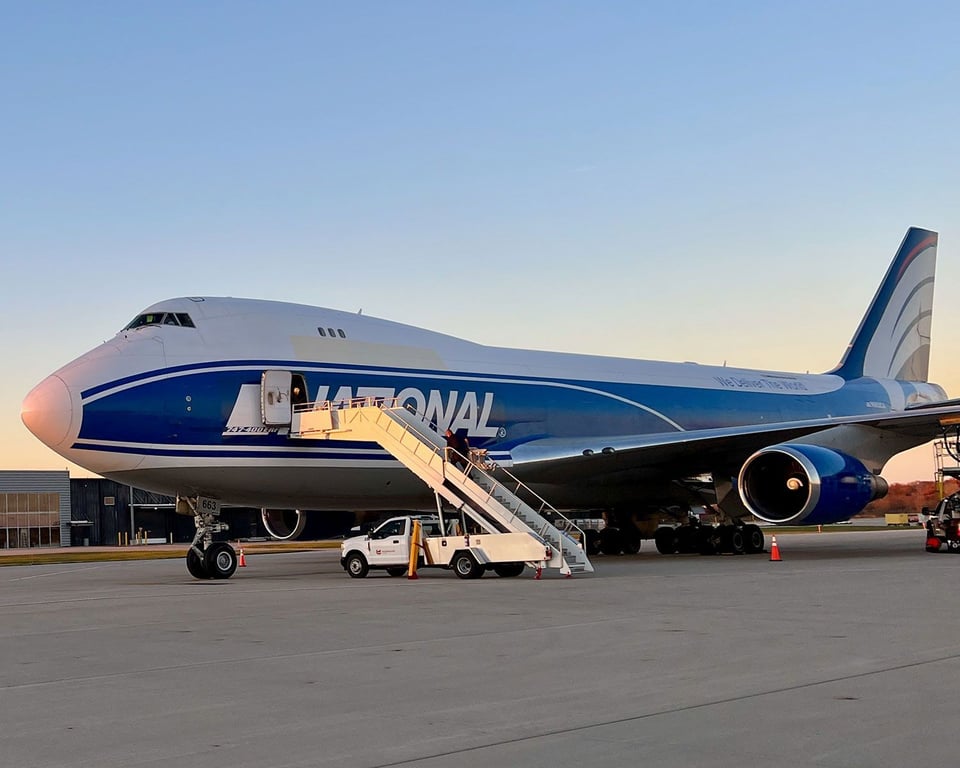July 12, 2022 | BY Dan Boaz
Truckload Demand Remains Higher than this Time Last Year
Share this article
Based on the latest reports on durable goods manufacturers’ shipments, orders and inventories, freight volume has yet to decline. The most recent numbers from the US Census Bureau show that orders for manufactured durable goods increased in May by 0.7% to $267.2 billion. This follows increases for seven of the past eight months.
This May, shipments of manufactured durable goods increased by $3.6 billion or 1.3%, followed by a 0.3 % rise in April. Inventories for manufactured durable goods have now increased for sixteen months and jumped by $2.7 billion, or 0.6%, in May following a 0.9% rise in April.
According to Christopher Rupkey, chief economist at New York-based FWDBONDS, “There’s some inflation behind the increase in orders, but, nevertheless, there are a lot of dollars flowing through the economy right now. Businesses would not order new equipment if they thought consumers and other companies were looking to pull back their purchases.”
Tim Quinlan, a senior economist at Wells Fargo, adds “we’ve seen two of the largest inventory builds on record in the past two quarters, but, taken in the context of still solid sales, inventories are not yet at a concerning level in our view. We take the rebuild in inventories as a signal that supply chain problems are slowly easing.”
The Port of Los Angeles, the USA's largest, has seen higher containerized import volumes in recent weeks year over year. This has led to higher truckload spot market volumes on key routes, such as LA to Chicago.
Truckloads moved have been rising for the past month following last week’s 7% week over week increase. At $1.80/mile, spot rates on this lane are still $0.9/mile lower compared with last year, although there are signs linehaul rates on this lane are increasing gradually. Spot rates in the overall LA market rose another $0.03/mile last week to reach an outbound rate of $2.27 per mile on average.
Spot rates in Savannah, Georgia -- #4 port in USA -- increased by $0.03 per mile to $2.27/mile. Rates in Jacksonville, Florida followed a similar path with rates up $0.02 per mile to an average of $1.9/mile, while in Elizabeth, New Jersey outbound spot rates increased by $0.04/mile to $1.69/mile.
For the Elizabeth to Chicago lane, linehaul rates continued to drop to an average of $1.43/mile or $0.30/mile lower year over year. Loads going south to Atlanta remained steady last week at $1.47 per mile. Meanwhile loads from Atlanta to Orlando increased by $0.03 per mile to $3.07/mile.
In Texas, spot rates going from Dallas to Laredo rose in the past week by $0.32 per mile, reaching $1.29 per mile. Meanwhile Outbound rates in Chicago grew by $0.04 per mile to $2.15 per mile after falling over the past month. They continued to fall on the Atlanta lane, with rates averaging $1.70 per mile or almost $1.00 per mile less than last year.
Dry van load posts grew by 5% in the past week as the end of month, quarter and half-year drew to a close. Volumes remain 7% lower when compared with the same time in 2018 as well as 28% lower vs. 2021. Equipment posts in the DAT freight network fell by 8% last week but were still at their highest over the last six years. Dry van LTR also rose last week to 4.29.
Overall dry van linehaul spot rates on the top fifty lanes reached an average of $2.39/mile last week -- $0.40/mile higher than the previous week’s average rate of $1.99 per mile. Dry van linehaul rates grew by just over $0.02/mile last week and are also $0.40/mile lower compared to the previous year and even $0.10/mile lower than in 2018. Dry van linehaul rates minus fuel have fallen by over 28% or $0.85 per mile YTD but are nonetheless $0.25/mile higher compared with the average of pre-pandemic years.
Our Process lorem ipsum dolor sit amet, consectetur adipiscing elit. Nunc vulputate libero et velit interdum, ac aliquet odio mattis.
Value prop lorem ipsum
Ut posuere hendrerit nisl metus neque. Facilisis quis adipiscing a molestie. Tempor turpis tincidunt nulla diam in. Nec etiam ut neque placerat mauris nulla. Semper hendrerit at urna orci in faucibus sit lacus. Tincidunt fermentum consequat.
SEE OTHER CITIES WE SERVICE IN THIS STATE
Value prop lorem ipsum
Ut posuere hendrerit nisl metus neque. Facilisis quis adipiscing a molestie. Tempor turpis tincidunt nulla diam in. Nec etiam ut neque placerat mauris nulla. Semper hendrerit at urna orci in faucibus sit lacus. Tincidunt fermentum consequat.
SEE OTHER CITIES WE SERVICE IN THIS STATE
Related Blog Posts

The Advantages of Hot Shot Trucking for Small Businesses
In the world of logistics, small businesses often face unique challenges when it comes to shipping their products efficiently and cost-effectively. This is where hot shot trucking can be a game-changer. Hot shot trucking offers a range of advantages that can significantly benefit small businesses, enabling them to compete in the marketplace and meet customer demands. In this blog post, we will explore the advantages of hot shot trucking for...

Louisiana's Transportation Plan To Benefit Hot Shot Trucking Industry
After years of discussion and debate from countless stakeholders, Louisiana is starting a new infrastructure project. Governor John Bel Edwards unveiled a $600 million plan to improve the state’s highways. Focusing on widening Interstate 10, this plan will be a boon to Hot Shot Trucking and other transportation companies that traverse the state. Governor Edwards announced the plan on Friday, May 13th, claiming that it was “of the utmost...

How Highway Closure Impacts Hot Shot Trucking California
Natural disasters can disrupt any industry, but their impact is particularly serious for logistics companies. The recent mudslides in California are a powerful case in point. By blocking Highway 101, one of the Golden State’s most important roadways, this environmental crisis has diverted trucks from their usual routes. This has significantly increased the cost and difficulty of completing hot shot freight deliveries, hampering the economy of...

Essential Tips for Successful Hot Shot Trucking
Running a successful hot shot trucking business requires a combination of effective strategies, attention to detail, and a commitment to customer satisfaction. Whether you're a new entrant or an experienced hot shot trucker, adopting essential tips can help you navigate the industry and increase your chances of success. In this blog post, we will provide practical advice and strategies for running a thriving hot shot trucking business, covering...

747 Freighter Air Charter to Hawaii
When it comes to providing air cargo capabilities, there is no aircraft in the world that compares with the Boeing 747 series of freighters. All three 747-400F, 747-400ERF and 747-8F freighter models in service today, are unmatched in carrying capacity, cargo handling, global reach, speed and versatility. An aviation icon born in 1968, the 747 is instantly recognizable by its large upper deck “hump”, four engines and six-story high vertical...

Regulatory and Legislative Update - October 2024
Contents Legislation Speed limiters, preemption, and Norton bill await possible lame duck action DOT Funding Bill Additional States Considering California Type CARB Restrictions Regulation and Enforcement Significant FMCSA regulation is limited before the next administration FMCSA Registration Modernization Stakeholder Day III Advocacy and Comment Legislation Speed limiters, preemption, and Norton bill await possible lame duck action Although...

Regulatory and Legislative Update - May 2024
Regulatory and legislative news for May 2024 includes the FMCSA renewing consideration of knowledge/proficiency exams for carriers and brokers, the FMCSA inviting comments on its plan for a new online registration platform and Hawaii seeking exemption on student transportation options. The FMCSA is also set to revise a younger driver pilot program. Contents Regulation and Enforcement FMCSA formally drops certain conditions for younger driver...

Regulatory and Legislative Update - August 2024
Contents Regulation and Enforcement FMCSA supports legislation to assess penalties for unlawful brokerage FMCSA Holds Final Listening Session on SFD Initiative FMCSA pushes back timing of various rulemaking proceedings DOT’s artificial intelligence head named FMCSA deputy administrator Company loses exemption bid for additional driving time FMCSA denies HOS exemption for drivers hauling cement FMCSA removes four devices from list of registered...

Regulatory and Legislative Update - September 2024
Contents Regulation and Enforcement House panel approves bill to address FMCSA’s commercial enforcement House panel advances bill granting carrier access to driver safety history Regulation and Enforcement FMCSA once again seeks input on plan to revamp online registration FMCSA seeks input by September 26 on its periodic review of guidance documents Truck Leasing Task Force to meet in October and November FMCSA removes two devices from list of...

Regulatory and Legislative Update - November 2024
Contents Regulation and Enforcement Trump presidency to bring big labor, environmental policy changes FMCSA regulations might not change much under Trump President Trump nominates former Rep. Sean Duffy as DOT secretary FMCSA acts on broker transparency, SMS changes in election’s aftermath FMCSA plans to postpone elements of broker/forwarder financial responsibility rule States begin mandatory CDL downgrades for clearinghouse violations Truck...

House Bill 7095 / Section 4202
House panel to vote on bill with measures on CSA, SFD, HOS The Democratic leadership of the House Transportation & Infrastructure Committee on June 4 introduced legislation (H.R. 7095) to reauthorize transportation programs following the expiration of the FAST Act on September 30. Title IV of the bill addresses motor carrier safety and includes several significant provisions related to Federal Motor Carrier Safety Administration (FMCSA)...

Regulatory and Legislative Update - March 2025
Contents Regulation and Enforcement Comments on broker transparency proposal are due March 20 Adrienne Camire named FMCSA acting administrator Senate confirms Chavez-DeRemer as Labor secretary EPA plans to reverse electric vehicle mandate, reconsider NOx rule CVSA schedules International Roadcheck for May 13-15 Legislation Senate panel holds hearing on cargo fraud and theft Courts Carrier sues TQL for refusing FMCSA dictate over disclosure...
WHAT IS HOT SHOT TRUCKING? AKA HOTSHOT TRUCKING
Modern business is all about strict timelines. Whether your field is manufacturing, extraction, retail, or research and development, your operations are bound to rely on activities that operate in tandem. The most minor of supply shortages can throw these activities off, potentially costing you thousands of dollars just for a few hours' delay. Success thus hinges on your ability to right the ship as quickly as possible after a supply shortage arises.
Industries We Serve
Modern day hot shot trucking provides the speed and exclusivity you need to meet the most demanding and time-sensitive shipping requirements. We use every resource, avenue, and channel available to ship your freight by ground or air. Designed specifically to address supply and distribution problems that arise without warning, hotshot trucking tactics involve coordinating a network of carriers in a variety of locations. By calling on the vehicles closest to your supply or distribution points, hotshot brokers can fill any sudden gaps in your supply network almost as soon as they happen. This minimizes the disruption to your business and allows you to quickly return to ordinary operations, weathering the storm without skipping a beat.
Automotive
The automotive supply chain already has significant challenges. Don’t let malfunctioning equipment stop the production line. Step on the gas with HotShotTrucking.com’s suite of services that will get you back in the fast lane. With HotShotTrucking.com, companies are devising shipping strategies to swiftly deliver critical parts and equipment — whether it's ground expedite service with sprinter vans, box trucks and 53-foot tractor trailers or air freight and air cargo.
Aviation & Aerospace
Every moment a commercial airliner sits on the ground, it costs an airline money. Expedited freight services by HotShotTrucking.com can get you back in the air with prompt delivery of parts and equipment throughout North America. We are equipped with the expertise to navigate the complexities of shipping jet engines and other types of loads, and our network of hot shot drivers has extensive experience transporting aviation assets.
Construction
One shipping delay can snowball and cause delays throughout your entire project. You need an experienced 3PL provider who understands the construction industry and has the logistical reach to deliver your freight on time, anywhere. That 3PL partner is HotShotTrucking.com. Whether in the air or on the ground via truck and trailer, we can connect companies to expedited freight services for the prompt delivery of parts and equipment throughout North America.
Mining & Metals
From cranes to chemicals to excavators to conveyor belts, HotShotTrucking.com has the experience and industry know-how required for shipping sensitive, oversized, and hazardous equipment. Third-party hot shot trucking and logistics providers such as HotShotTrucking.com specialize in devising and implementing innovative shipping solutions, ensuring mines can swiftly return to operation. We’ll pick up your shipment, deliver it to the airport and receive it at the other end – providing hand-carried service as necessary or required.
Manufacturing
Every moment a manufacturing facility or factory sits idle costs a company money because of the high costs involved. With many manufacturers building to only just-in-time production rates, any disruption threatens parts and vehicle inventories. This is where the speed and expertise of freight services from HotShotTrucking.com can make a difference throughout the entire manufacturing supply chain. We do all the logistical legwork to find the optimal solution for your job, whether it's an exclusive air charter or expedited ground shipping.
Telecommunications
From servers to cell towers, information, voice, and data must flow to keep businesses, production, and the public online and connected. When equipment goes dark, depend on HotShotTrucking.com to get your systems flashing green again. This is where the speed and experience of trucking and freight services from HotShotTrucking.com can help. Our hot shot truck network excels at the prompt delivery of parts and equipment throughout North America.
Oil & Gas
The oil and gas industry faces challenging conditions in offshore and onshore oil rigs, often in remote locations with limited infrastructure. Don’t let oil pumps or pipelines sit idle waiting for equipment. By having the right plans, parts, people, and logistics partner like HotShotTrucking.com, you can effectively mitigate plant or pump downtime, unscheduled disruptions, and equipment failures.
Cost of Urgent Shipping
Which of our specialized shipping services best fits your needs?
Blog and Resource Center
How AirFreight.com Solved a PGA Tour Shipping Emergency
Learn how AirFreight.com located a lost shipment and helped save the PGA Golf Tour.
How AirFreight.com Saved The Farm By Solving A Major Shipping Delay
Learn how we saved a Montana-based artisanal farm thousands of dollars by expediting a shipment of perishable goods.
Expedited Shipping Vendor Comparison
We’ve done the research for you. This vendor comparison sheet breaks down how AirFreight.com stacks up against the competition.

talk to an expeditor now
Get a Quote in Minutes for Your Time-Critical Freight Needs
GET A QUOTE
